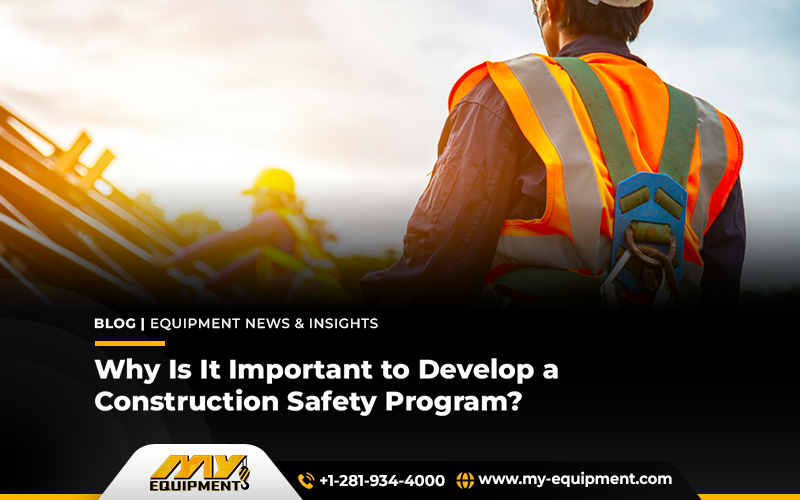Safety concerns always come to mind when it comes to the construction industry and its heavy-duty daunting job. It is true in all senses due to the riskiest nature of jobs. Whether working manually on a construction site or using heavy equipment, you need a safety measure by all means. A slight negligence at the construction site may cause fatalities not only to the person doing the job but to the people working around as well.
Hence, the Occupational Safety and Hazards Association (OSHA) always forces construction managers to implement safety measures and it keeps revising its policies considering the possible risks on the site. Developing a strong construction safety policy is essential to guaranteeing both the prosperity of your company and the safety of your employees. However, you need to be aware of the rigorous and essential steps of developing the safety measures at your construction site.
-
Consider boosting the hiring process
The cornerstone of your organization’s safety culture is laid during the hiring process. Here’s a thorough explanation of how to make this important step stronger:
Legal Review
Work with legal professionals to examine and improve your business’s hiring and recruitment procedures. Make sure they comply with all applicable state, federal, and OSHA safety rules as well as industry-specific guidelines.
Background Checks
Perform comprehensive background investigations, which should include examinations of criminal histories and motor vehicle records (MVRs). Keep an eye out for any signs of risky behaviour or previous occurrences that can provide hazards in a building site.
Reference checks
To evaluate candidates’ safety practices records, ask for references from prior employers or colleagues. Find out how committed they are to adhering to safety procedures and how they can help create a safe work environment.
Set Rules
Establish precise hiring policies and requirements for positions that put safety first. Make sure that potential hires are aware of and able to meet the critical safety qualifications and requirements for each function by clearly defining them.
Instruction
Give new hires thorough safety instruction that emphasizes using personal protective equipment (PPE), and handling emergencies, and dangers unique to their line of work. Provide retraining opportunities and continuous education to strengthen safety habits and knowledge.
-
Handle particular risks
Building sites are dangerous places by nature. It is imperative to recognize and address particular dangers to safeguard your employees. Here’s how to tackle this vital safety management component:
Environmental Assessment
Before starting work, perform in-depth environmental assessments of project sites. Determine any risks, including those related to chemicals, asbestos, cramped quarters, and ergonomics. Establish procedures for controlling and reducing these risks.
Equipment Safety
Implement strict safety protocols when using equipment to ensure its safety. Make sure staff members receive in-depth instruction on how to use and maintain construction machinery for sale. Perform routine daily checks on equipment and tools to identify and quickly fix any possible safety concerns.
Supervision
To ensure workplace safety, appoint seasoned supervisors or safety officials. Give them the authority to carry out routine checks, recognize dangers, and implement safety procedures. Encourage open lines of communication for reporting incidents and safety concerns.
Safety Culture
Foster a robust safety culture in your company. Set an exemplary example and give safety a top priority in all facets of operations. Promote proactive safety practices such as attending safety meetings, reporting hazards, and joining committees.
-
Evaluate and revise your plan often
A dynamic safety program needs to be continuously assessed and adjusted for changing dangers. This is a thorough method for evaluating and improving your safety plan:
Analysis of Incidents
Analyze historical occurrences and near-misses in detail. To create proactive preventive tactics, identify the underlying causes, trends, and patterns. Put corrective measures in place to deal with underlying safety issues.
Employee Compliance
Conduct routine audits and observations to keep an eye on employees’ adherence to safety procedures. To successfully manage non-compliance and reinforce safe behaviours, provide continuous training and feedback.
Strategy Optimization
Continually assess and revise your safety strategy in light of new information and potential threats. Involve staff members in the process by asking for input, carrying out safety surveys, and incorporating them in projects expected to improve safety.
Training and Communication
Clearly and effectively communicate any updates or modifications to the safety strategy. Give specialized instruction on new practices, innovations in technology, or legal needs. Make sure that all workers have access to the most recent safety resources and data.
-
Examine your policy for insurance
Insurance is essential for reducing the financial risks brought on by accidents and injuries at work. This is a comprehensive guide to help you get the most out of your insurance:
Risk Assessment
Work together with your insurance company to carry out thorough risk analyses. Examine possible liabilities, gaps in coverage, and insurance requirements particular to your building projects and activities.
Safety Plan Review
Consult the safety specialists at your insurance company to assess your safety procedures and program. Ask for opinions and suggestions on how to improve safety precautions and lower insurance risks.
Policy Optimization
Customize insurance plans to meet your safety objectives and address hazards that have been identified. Think about your alternatives for business interruption, property damage, general liability, and worker’s compensation coverage. Examine the exclusions, deductibles, and policy limitations to be sure you have enough protection.
Continuous Monitoring
As project scopes, company dynamics, and regulatory requirements change, periodically assess and update your insurance coverage. To effectively manage insurance risks, and keep up with market developments, industry best practices, and new threats.


 1400 Broadfield Blvd, Houston, TX 77084,
USA.
1400 Broadfield Blvd, Houston, TX 77084,
USA. omer@my-equipment.com
omer@my-equipment.com